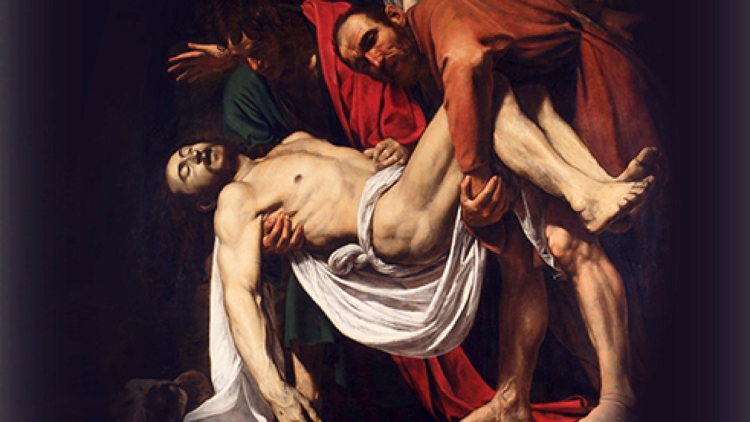
'From Tourist to Pilgrim': Let yourself be transformed!
By Linda Bordoni
“From Tourist to Pilgrim” is Vatican Media series of podcasts featuring the knowledge, insights and presence of Liz Lev, designed to help us prepare for the 2025 Jubilee by accompanying pilgrims along their journey through Rome’s Basilicas, holy places and works of art.
The original music score was composed by Vatican Radio’s Mara Miceli and by Umberto D’Auria. Mara also produced the podcasts directed by Johana Bronkova.
But for more about what’s in the 16 podcasts that make up the series, Liz Lev agreed to pop into Vatican Radio to explain how she hopes to help visitors to Rome to journey with the eyes of a pilgrim and experience this coming Jubilee Year as true Pilgrims of Hope.
Seeing with the eyes of a pilgrim
Liv told me she is so honoured and excited to have been asked "transform some of the many, many, many visitors, as they come to Rome and help them see with the eyes of a pilgrim."
She explained that one of the reasons she found this project so intriguing lies in the fact that much of it had to do with her own journey to and within the eternal city.
“I suppose I was a tourist when I first came here, but I was also an art historian,” she said, and the way she was taught to study art and to understand art “really precluded looking at its spiritual side.”
But living here in Rome and being part of this world led her to try to see the works of art in the light in which they were made and for whom they were made.
This perspective, she said, opened up “a whole new beauty to this work.”
Seeing beyond the surface
Liz said her podcasts aim to help the pilgrim see beyond the surface.
“Being able to open up the work of art and get lost in all the spectacular facets within,” she explained, is something she feels privileged to be able to promote.
The art historian told me that the podcasts, with a new episode released each Tuesday, take us on a pilgrimage inside the Papal Basilicas as well as before fountains and frescoes, into squares, up and down steps and roads.
One of the reasons why this project intruiged her so much, Liz said, is that so many people who come to Rome don't realize how many of these spectacular things we come to see were made specifically for pilgrims: “Everything from the placement of the obelisks in the piazzas around the city, Michelangelo’s Pietà - it was made for a Jubilee - Caravaggio got his start for a Jubilee!”
She explained that at the heart of a pilgrimage is the concept of renewal, rebirth:
“This idea of coming to Rome to renew oneself, to become new once again, has been reflected in the art, and by looking at it with the lens of a pilgrim, we can see this art with new eyes,” she said.
The experience, she added, was meant to help us “transform in an interior spiritual fashion.”
Hope and beauty
The theme of this Jubilee Year is “Pilgrims of Hope,” a poignant subject in a time of global conflict and darkness. I asked Liz whether she thinks beauty, art, can save us.
“Absolutely…,” she said, and “What a great idea: “Pilgrims of Hope” recalling that when half the things on this list were made, Rome had undergone terrible things.
“There was a Jubilee Year during wars, there have been Jubilee years during plagues, during floods, during disaster after disaster…. And the disasters are always going to be there,” she said emphasizing that what we have left is not the memory of the bad things that happened in that span of time, “but the work of beauty that we were able to put forth, even in our darkest moments.”
It's a great reminder, Liz continued, that “beauty helps us to see beyond, and while it's important to address the terrible things that happen in the world right now if we get too lost in them, we lose hope. But when we look beyond and we see greatness and we have this glimpse of a grander story, that is part of what gives us hope.”
Art in action
And with a concrete example, Liz’s words became a picture in the making: “I just left the Sistine Chapel a few minutes ago, and I was looking at that image of the drunken Noah: It’s a dark scene, and it's the last scene of the ceiling; Noah was supposed to save everybody and now he's passed out drunk, and “darn, doesn't this stink!”… and [next to him] Michelangelo put a brightly coloured prophet, with emerald green and topaz yellow. Your eye gets called away by cheerful colours. What is that profit saying? ‘I see a light coming from the east.’”
It's all about, she said, how those two little panels take the viewer out of the darkness and into the promise of a light of hope.
Let yourself be transformed
As a Roman, Liz concluded, she looks forward to seeing throngs of pilgrims coming through the city, even though it’s going to be busy. And she had words of encouragement for pilgrims and Romans alike:
“I would say that it's a moment of transformation: let yourself be transformed! The great graces that will be flowing through the city, the beauty of the art, so many people side by side are experiences to be shared: Make sure you get the most out of this Jubilee Year!”
Thank you for reading our article. You can keep up-to-date by subscribing to our daily newsletter. Just click here




.JPG/_jcr_content/renditions/cq5dam.thumbnail.cropped.750.422.jpeg)






